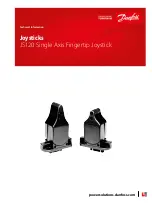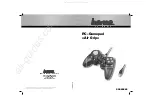
DMC490 Microgrid Controller Software Configuration Guide
36
Start Cost ($) Specify the cost in dollars to power up the co-generator. Include the
cost(s) that you think are important based on your experience with the
generation resource and the microgrid. The cost is in dollars; for other
currencies simply enter that value and be consistent in all fields
involving the currency.
$0 to
$1,000,000
$10
Stop Cost ($)
Specify the cost in dollars to power down the co-generator. The cost is
in dollars; for other currencies simply enter that value and be
consistent in all fields involving the currency.
$0 to
$1,000,000
$10
Isochronous
Operation
Mode1
Specify if isochronous or droop (non-isoch) mode is to be used for the
co-generators in each of the microgrid operation modes.
Numbers 1 to 4 in this setting name refer to operation modes for the
microgrid. Depending on the type of isochronous machine and how
the reserve margins are provided, four different operation modes can
be considered for the microgrid.
For example the following mode numbers can be used:
1.
Dispatchable/CHP isochronous load sharing
2.
Hydro in isochronous
3.
Single dispatchable/CHP in isochronous
4.
Grid in isochronous
For example, assume in a particular microgrid, one big co-
generator can operate in isochronous mode. This corresponds to
Operation Mode 3; however, any of the four operation modes can
be assigned to a single co-generator in isochronous. If the
operator follows the suggested operation-mode assignment (that
is, Operation Mode 3 is single dispatchable/CHP in isochronous)
and Co-generator 1 is supposed to be the isochronous machine,
the following are set for this machine:
•
Operation Mode 1 =
Droop
•
Operation Mode 2 = Isoch
•
Operation Mode 3 = Droop
•
Operation Mode 4 = Droop
In this manner, if you select the third mode to be the active mode
for the microgrid, then Co-generator 1 can run in isochronous
mode by receiving the isochronous command from DMC490. For
the other microgrid operation modes, Co-generator 1 is in non-
isochronous mode (as set by zero values).
Isoch
Droop
Droop
Isochronous
Operation
Mode2
Isochronous
Operation
Mode3
Isochronous
Operation
Mode4
Electric
Constraint
Mode
The 'Soft' constraint means that the co-generator is allowed to violate
its minimum power generation level but at the cost of a penalty in the
objective function. Having the possibility of going below the minimum
power (soft constraint) can positively affect the feasibility of the
microgrid optimization problem.
The 'Hard' constraint means that the co-generator is not allowed to
go below its minimum power generation level.
Use this setting in conjunction with
Electric Power Penalty
.
Hard
Soft
Hard
Electric
Power
Penalty
($/kWh)
Use this setting in conjunction with
Electric Constraint Mode
. This
setting puts a numerical value on the minimum power violation. When
the violation from minimum power is critical, set a high value here.
$0 to 1000
per kWh
$0 per
kWh
Summary of Contents for DMC490
Page 6: ......















































